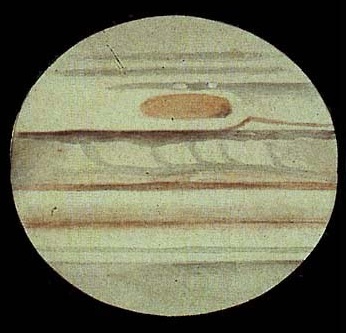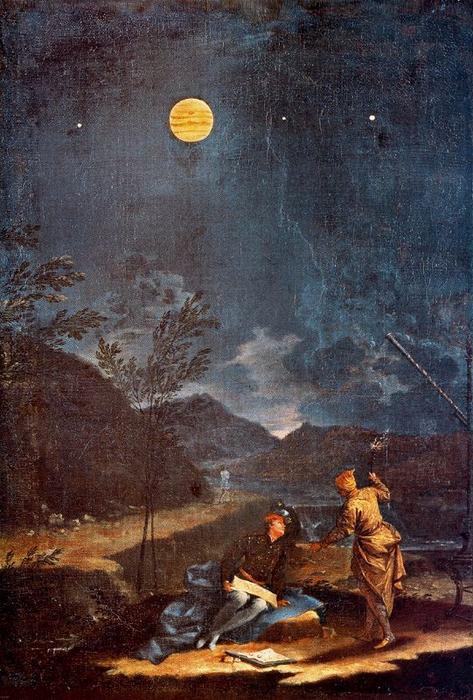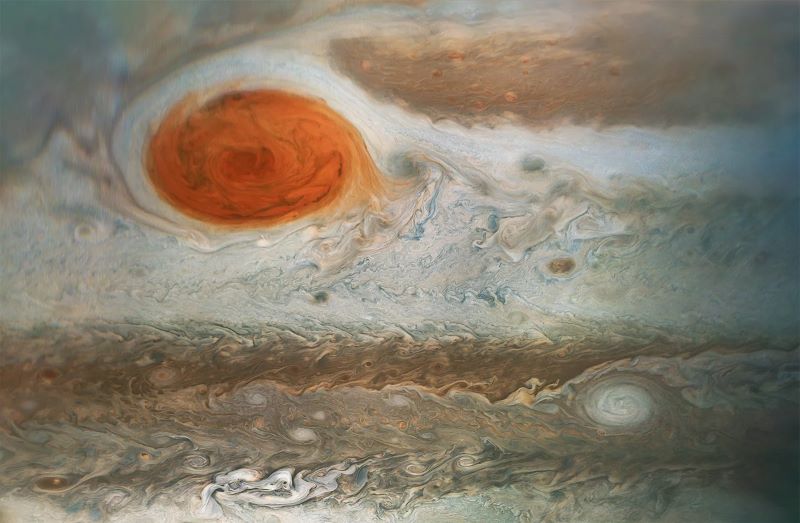Jupiter’s Great Red Spot
In the 1600s, astronomers such as Giovanni Domenico Cassini, Robert Hooke and Galileo Galilei first pointed a new instrument called the telescope at the sky and saw a reddish spot on Jupiter. In fact, Cassini – whose observations started in 1665 – called it a “Permanent Spot”. This huge orangish anticyclone is a storm system on the solar system’s largest gas giant planet that has persisted for a few hundred years … or has it? On June 17, 2024, researchers said the Great Red Spot we see today on Jupiter is not the same storm astronomers saw in the 1600s. The researchers said this storm formed some 190 years ago. But that still makes it the longest-lived vortex in the solar system.
The researchers published their peer-reviewed study in Geophysical Research Letters on June 16, 2024.
Hold old is it?
We already knew the size and color of the Great Red Spot have varied over the years. In 1879, scientists estimated the Great Red Spot was 24,200 miles (39,000 km) at its widest. But today the storm is about 8,700 miles (14,000 km) wide and rounder in shape. Currently, it’s about the size of one Earth-diameter.
So, scientists decided to look at the historical record of this fluctuating storm with numerical models in an attempt to explain its nature and longevity. Lead author Agustín Sánchez-Lavega of the University of the Basque Country in Spain said:
From the measurements of sizes and movements, we deduced that it is highly unlikely that the current Great Red Spot was the ‘Permanent Spot’ observed by Giovanni Domenico Cassini. The ‘Permanent Spot’ probably disappeared sometime between the mid-18th and 19th centuries; in which case, we can now say that the longevity of the Red Spot exceeds 190 years.

Early observations
The so-called Permanent Spot persisted from the 1600s to about 1713, when astronomers reportedly lost track of it. It was not until more than 100 years later, in 1831, that astronomers again began taking note of an oval storm at around the same latitude as the previous Permanent Spot. So, astronomy historians have long wondered if this was the same spot or a different one cropping up in the same location.
Sánchez-Lavega said:
It has been very motivating and inspiring to turn to the notes and drawings of Jupiter and its Permanent Spot made by the great astronomer Giovanni Domenico Cassini, and to his articles of the second half of the 17th century describing the phenomenon. Others before us had explored these observations, and now we have quantified the results.

How did it form?
Recent spacecraft observations show the Great Red Spot is shallow and thin. So researchers used computer modeling to analyze the behavior of thin vortices in the Jovian atmosphere. The researchers had a couple options for how the storm could have formed. It may have been the result of a huge superstorm, a merging of smaller vortices, or perhaps an instability in the winds creating an atmospheric cell.
The modeling showed that anticyclones from superstorms or mergers would result in different properties from the Great Red Spot we see today. But the model of an atmospheric cell produced by an instability from the severe Jovian winds made for a pretty good fit. This model would create a “proto-Great Red Spot”. Then the early form of the Red Spot would eventually shrink, creating a compact and rapidly rotating storm.
And early sketches do show a more elongated Great Red Spot in the past. Plus, scientists have observed other big, elongated cells transform into different vortices on Jupiter.
In the future, scientists would like to learn how the Great Red Spot is so stable. And they’d also like to know if the Great Red Spot will continue to shrink until it disintegrates or if it might find stability and persist for many years to come.
More stats on the Great Red Spot
The fastest winds of the anticyclone roar at about 280 miles per hour (450 km per hour). Its red coloration is due to chemicals in the atmosphere. The strong winds in the vortex stir up ammonia ice particles into the upper layer of clouds. And this exposes them to the sun’s ultraviolet light, giving this region a slight sunburn.

Bottom line: Scientists said Jupiter’s Great Red Spot has persisted for around 190 years. They believe it’s not the same storm astronomers saw on Jupiter in the 1600s.
Source: The Origin of Jupiter’s Great Red Spot
Via AGU
Read more: Jupiter’s Great Red Spot is shrinking! See photos